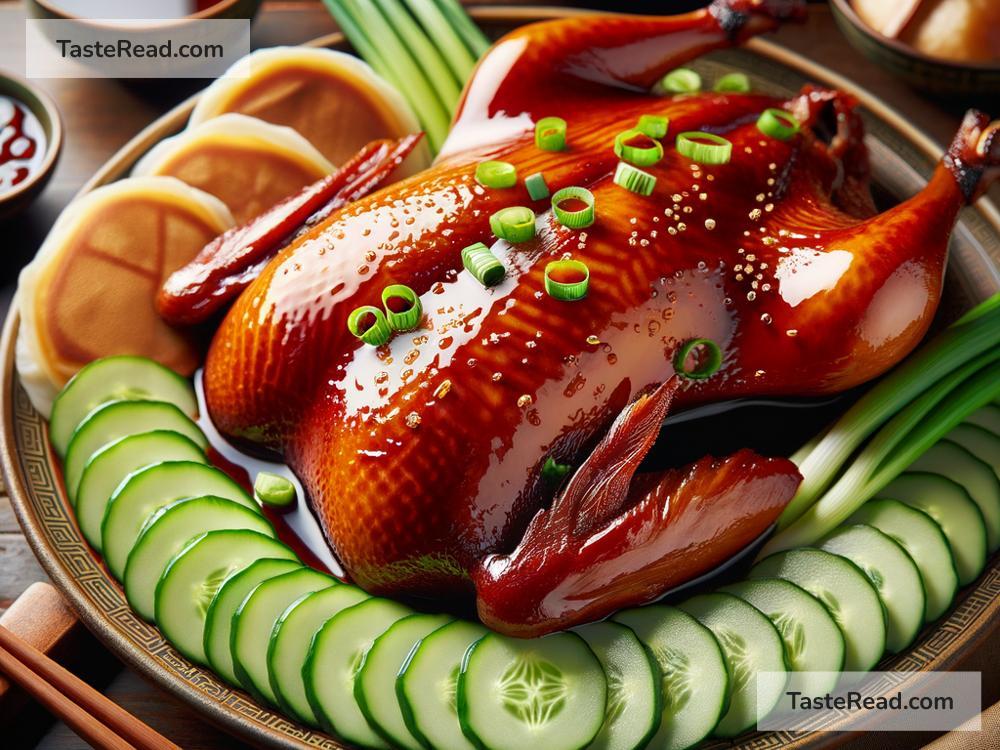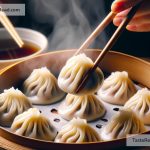Title: The Fascinating Journey of Peking Duck: From Beijing to Gourmet Tables Worldwide
The story of Peking Duck, a dish wrapped in history, flavor, and elegant simplicity, is one worth knowing. This culinary masterpiece has transcended borders, becoming a symbol of gourmet Chinese cuisine around the globe. But how did a simple duck recipe from Beijing transform into a sought-after dish in upscale restaurants? Let’s unwrap this delicious tale.
Origins: A Royal Beginning
Our journey starts in Beijing, the heart of China, centuries ago. The earliest mentions of a dish closely resembling Peking Duck can be traced back to the Yuan Dynasty (1271-1368), but it was during the Ming Dynasty (1368-1644) that it began to gain popularity. Originally, this delicacy was served exclusively in the imperial court, where only the emperor and his royal guests had the privilege of indulging in it. The meticulous cooking method, which involves air-drying the duck, then roasting it until the skin becomes crispy while keeping the meat succulent, was perfected over years, making it a masterpiece of Chinese culinary art.
The Spread to the Masses
As time passed, Peking Duck began to make its way from the secluded kitchens of the imperial palace to the streets of Beijing. During the Qing Dynasty (1644-1912), chefs who worked in the royal kitchens started to open their own eateries, sharing the exquisite dish with the public. This marked the beginning of Peking Duck’s journey into the hearts and tables of people beyond the echelons of royalty.
The Art of Preparation
What sets Peking Duck apart from other duck dishes is its intricate preparation process. Chefs start by inflating the duck, separating the skin from the fat to ensure it crisps perfectly when roasted. The duck is then glazed with a layer of maltose syrup, giving it a sweet flavor and a glossy finish. After being air-dried, the duck is roasted in a specific type of oven, traditionally fueled by fruitwood, which imbues the dish with a unique fragrance. This meticulous process results in a dish that is not only a treat for the taste buds but also a feast for the eyes, with its shiny, amber-colored skin.
Peking Duck Goes Global
The cultural shifts and opening of China to the world in the 20th century played a significant role in the globalization of Peking Duck. World leaders and celebrities visiting China were often treated to this delicacy, sparking international interest. In the 1970s, as Chinese immigrants established restaurants abroad, they introduced Peking Duck to a broader audience, adapting the dish to suit local tastes while retaining its authentic essence.
This culinary export soon became a symbol of Chinese gastronomy, celebrated for its rich history, complex preparation, and exquisite taste. Today, Peking Duck is served in high-end Chinese restaurants worldwide, often accompanied by thin pancakes, finely sliced cucumbers, spring onions, and sweet bean sauce, allowing diners to create their own savory wraps.
Conclusion: A Symbol of Cultural Pride
The evolution of Peking Duck from a royal dish to a global gourmet phenomenon is a testament to the richness of Chinese culinary traditions and their ability to mesmerize palates across the world. It symbolizes not just the sophistication of Chinese cooking methods but also the culture’s openness to sharing its culinary gems.
The journey of Peking Duck reflects the transformative power of food in bridging cultures and creating shared experiences. It’s a dish that invites curiosity, appreciation, and enjoyment, transcending linguistic and cultural barriers. Whether you’re savoring it in a cozy eatery in Beijing or a chic restaurant in New York, Peking Duck is more than a meal—it’s a celebration of history, craft, and the joy of eating.
So, the next time you find yourself dipping a piece of that crispy, aromatic duck skin wrapped in a thin pancake with a dollop of sweet bean sauce, remember the centuries-old journey it has taken to reach your plate. From the imperial courts of Beijing to gourmet tables around the world, Peking Duck stands as a shining example of culinary excellence and cultural exchange—a true gourmet delight.


